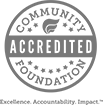A Community Joins Forces to Battle Human Trafficking
Two decades ago, victims of human trafficking in northwest Ohio — and indeed, in most of the nation — faced bleak prospects. Labeled as criminals, they had little hope of escaping those who exploited them, as their alternative to slavery was usually imprisonment.
In the late ‘90s, as the public began to better understand the real nature of human trafficking, the criminal justice system likewise began to change its approach, and area social service agencies got involved. But while the goals were admirable, the shadowy nature of human trafficking made it hard to identify those in need, and the various groups working on their behalf were not well coordinated.
To improve the situation in northwest Ohio, stakeholders came together to form the Lucas County Human Trafficking Coalition (LCHTC). It brought together key partners in law enforcement, health care, social services agencies, and education to improve prosecution of traffickers and assistance to their victims. But process issues still persisted.
Enter PATH
“PATH — Partners Against Trafficking in Humans — Is both a network and a methodology,” explained Chris Dziad, program officer for the Toledo Community Foundation. “The network includes more than 60 area agencies and individuals who work with victims of human trafficking on everything from legal services to housing to job training and placement. PATH’s methodology is to find victims of human trafficking, link them with services, and use data from those services to improve outcomes.”
PATH was the product of collaboration between the LCHTC and Dr. Celia Williamson, director of UT’s Human Trafficking Institute, and PATH Coordinator, Fanell Williams. “I had been serving as an evaluator of a program called Pathways, developed in Mansfield, Ohio by Dr. Sarah Redding,” said Williamson. “Pathways was incredibly successful in improving outcomes for low-birth-weight babies. I saw that it could be applied to the human trafficking issue with similar results.”
Data-driven feedback improves outcomes
“What’s different about PATH is the academic component,” explains Brett Loney, UT Foundation Associate Vice President of Central Development, who brought the project to TCF’s attention. “UT’s Human Trafficking Institute provides both teaching and research to analyze and improve outcomes.”
Commenting on the Institute’s role in PATH, Dr. Williamson explained, “The Pathways model that we adapted involved the use of a ‘hub’ that served both as a resource for connecting victims to services, and for gathering data from those services.
“With the data collected from those agencies,” she continued, “we can identify the interventions that work and those that don’t. Our leadership subcommittees then work with those findings to break down barriers and improve our processes. That allows us to direct community resources accordingly.”
In the local PATH model, the Hospital Council of Northwest Ohio houses and manages the PATH hub. Said Dziad, “The Council was already involved with the low-birth-weight project, and so PATH was a natural fit for them. Their collaboration is an essential part of the process.”
PATH also has a mission-critical training component that was Dr. Williamson’s innovation. “To succeed, we must first prepare the community,” said Williamson. “Upon joining PATH, all participating agencies receive training in human trafficking issues, trauma-informed care, and the PATH model – so we are all on the same page.”
A well-conceived plan opens funding doors
When PATH needed startup funding, Loney thought it might be a fit for the Toledo Community Foundation.
“When I first learned of PATH, I thought it fit the Toledo Community Foundation way of doing things,” said Loney. “It involved community collaboration with established participants who had proven track records, and it was well-visioned.”
Loney also noted that PATH had already obtained both private and public grants, and had excellent prospects for continued funding once the program was established. “The evidence-based approach of this program is very attractive to supporters,” he added.
Chris Dziad agreed. “Human trafficking was an issue the Toledo Community Foundation had established a decade ago as a priority,” she said. “So, when the UT Foundation approached us about PATH, we were thrilled.
“We could see it had all the characteristics we look for in a funding opportunity,” she continued, “and UT’s commitment of support meant they had both stability and strong potential to win large grants from major funders to sustain their work.”
“We could see it had all the characteristics we look for in a funding opportunity and UT’s commitment of support meant they had both stability and strong potential to win large grants from major funders to sustain their work.”
_ CHRIS DZIAD
Stability for PATH’s clients and a safer, healthier community is the ultimate goal of everyone involved with PATH. “We don’t just want victims to survive. Our goal is to move them from victim to survivor to THRIVER,” said Dr. Williamson. “I never once met a victim who didn’t want a better life,” she added. “We can make that happen.”
No more "throwaway people"
The story of PATH begins more than two decades ago with one remarkably determined individual, UT professor Dr. Celia Williamson, and her conviction that a broken system not only could be repaired, but could be completely reconceived.
“Back in the early ‘90s, I was just going to be a social worker helping women and kids in Toledo’s North End, and then retire,” mused Dr. Williamson, reflecting on her early career goals. “Human trafficking victims were not my focus. Initially, I just wanted them off the streets and not troubling ‘my kids.’
“But then I started to realize that these women were actually victims,” she said. “And where was the help for them? There wasn’t any – because we treat these women as ‘throwaway people.’ We think, ‘I’m going to help someone who DESERVES help,’ and we pass them by. I couldn’t just let that happen.”
Creating a "go-to" place for victims
Williamson recognized at the outset that before she tried to solve the problem, she needed to understand it — and so her first step was research. After six months of interviewing victims in Toledo’s north end, she formed her first program to serve trafficked women, named by the women themselves as Second Chance. “Second Chance (now known as RISE) soon got a reputation as being the place to go for anyone having trouble with ‘the system.’ Even insiders like police and health care workers got involved,” said Williamson.
Reframing the discussion
Knowing that the public felt such women didn’t “deserve” help, another of Celia’s goals was to reframe the discussion surrounding trafficking victims. “I worked closely with The Blade to connect reporters to stories they wouldn’t have otherwise been able to tell – and in so doing, we were able to heighten public awareness and shift public opinion,” she recalled. “I also did a LOT of presentations to area churches. Our first grant for Second Chance came from the United Methodist Church as a result of one of those presentations,” she noted.
When the U.S. Congress passed the Federal Trafficking Victims Protection Act in 2000, the problem was finally redefined legally. “We didn’t even use the term ‘human trafficking’ originally,” said Williamson. “With the passage of that law, anyone under 18 engaging in prostitution was automatically defined as a victim, as was anyone who was under force, fraud or coercion. Calling this ‘commercial sexual exploitation’ completely changed the discussion.”
Developing a global network of experts
The year 2000 saw another important goal completed for Dr. Williamson: she finished her PhD at Indiana University and accepted a position on the faculty at The University of Toledo. “I knew my research opportunities were here because I already had an established network of people in the tough communities I had served in the past – so doors would open here.”
And open they did. With her new duties of teaching and research, Williamson turned over Second Chance to its well-mentored staff and turned her attention to overcoming the next major barrier in human trafficking: communication.
“People in the field weren’t sharing what was working and what wasn’t – we needed a conference. So I decided to host one.” she said. Now in its 14th year, the annual Human Trafficking and Social Justice Conference attracts more than 1500 attendees to the UT campus each year, and has greatly expanded both awareness and understanding of human trafficking.
Establishing UT's Human Trafficking Institute
As UT’s thought leadership in the field of human trafficking grew, University leadership recognized the need for a greater commitment to support that work. And in 2014, UT’s governing board voted unanimously to create the Human Trafficking Institute at UT, one of the first of its kind worldwide.
The Institute’s mission is to expand knowledge about human trafficking and to establish best practices in the field of human trafficking intervention. Its ongoing partnership with the UT Foundation was an important factor in the establishment of PATH.
“The UT Foundation was a tremendous asset to the Institute. It’s been a wonderful partnership,” she said. “Together, we’ve identified objectives and priorities; drafted case statements, opened doors, and started the conversations that have led to real change in the community.”

